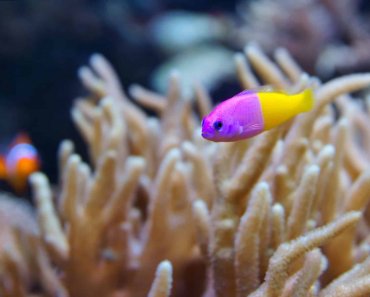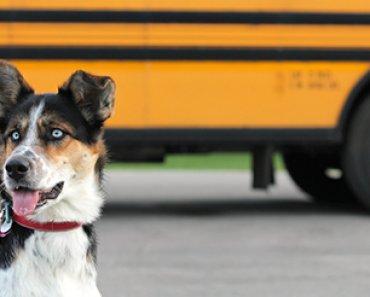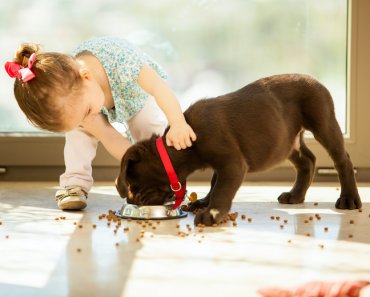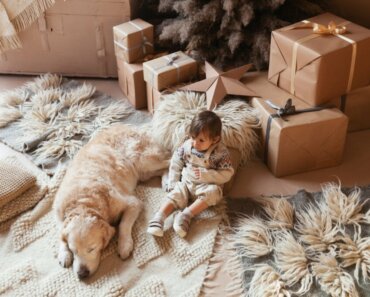Contrary to popular belief, most cranial cruciate ligament problems in dogs don’t arise from acute injuries. A lack of manganese in the diet is a major contributor.
Cranial cruciate ligament (CCL) disease arises all too frequently in our dogs. It’s a very common reason for hind leg lameness, pain, and arthritis of the knee, and can be quite serious and debilitating. Although it’s natural to think all CCL problems in dogs are caused by sudden or acute injury, that isn’t the case. Nutrition also plays a role — specifically, manganese deficiency can be a key contributor.
NORMAL ACTIVITY SHOULDN’T RESULT IN CCL DAMAGE
Dogs are meant to sprint upstairs, occasionally slide across floors, and repeatedly jump on and off things, and not tear a ligament. Yet most veterinarians regularly see patients who were just living their normal lives with no trauma, but developed CCL disease. This isn’t how healthy bodies are designed to respond to an active lifestyle.
I noticed many years ago that CCL problems were the most common soft tissue injuries I was seeing in my practice. Since very few of these injuries were caused by trauma substantial enough to warrant a rupture, I went digging for clues and found that my CCL patients fell into four different categories:
- Dogs that experienced a traumatic injury (what I call the “Mack Truck” scenario).
- Large or giant breed dogs, or those that were overweight. Alternatively, the condition had a genetic component, or the dogs were over-vaccinated, or spayed/neutered versus sterilized (via ovary-sparing spays, which maintain health hormones but prevent pregnancy).
- Those eating poor quality processed foods to which equally poor quality synthetic vitamins and minerals had been added to meet AAFCO minimum nutrient requirements.
- Dogs eating homemade “prey model” diets that were nutritionally imbalanced.
Interestingly, the vast majority of dogs I was seeing with CCL damage were active, healthy animals that had been sterilized but not de-sexed. They weren’t over-vaccinated, and they weren’t overweight. But many clients were feeding prey model homemade diets (80% meat, 10% bone, 10% organs) that weren’t nutritionally balanced. This made me suspect inadequate nutrition as a potential cause for most CCL injuries in my patients.
MANGANESE — THE MISSING INGREDIENT
I came up with one recurring factor related to connective tissue resiliency: the dietary intake of manganese (Mn). Manganese is required for healthy, strong ligament development and maintenance. A dog’s manganese requirements are high, and food sources vary as to the amount of manganese they contain.
intake of manganese (Mn). Manganese is required for healthy, strong ligament development and maintenance. A dog’s manganese requirements are high, and food sources vary as to the amount of manganese they contain.
Poor quality processed dog foods don’t contain enough manganese. Among those who home-prepare their dogs’ food, many don’t follow recipes. Most prey model feeders mistakenly assume that the variety of free range, organic meat, bone and organ blends they feed their dogs contain all the minerals they need. However, the sheer volume of non-traumatic CCL tears that veterinarians are seeing in prey model-fed dogs tells a different story.
MANGANESE IN THE CANINE ANCESTRAL DIET
Where does manganese come from in the ancestral canine diet? Minute amounts come from meat, liver and bone, but these sources don’t provide nearly enough manganese to meet a dog’s daily requirements, which is why so many dogs become deficient. The richest sources of manganese actually come from the animal parts none of us use — primarily hair, feathers and wool.
The wild dog’s ancestral diet and lifestyle provided an abundance of opportunities for consuming manganese, but this is simply not the case for domesticated dogs. The ancestral diet provided, on average, 3.1 mg of manganese per 1,000 kcal (calories) — a very ligament-supportive diet. In contrast, AAFCO minimum manganese requirements are 1.8 mg per 1,000 kcal of food. This is roughly 50% of the manganese the ancestral diet provided.
PREY MODEL DIETS LACK MANGANESE
Instead of feeding more nutritionally compete ancestral diets, many people give their dogs homemade prey model diets instead. A prey model diet of 80/10/10 lean beef supplies 0.22 mg Mn per 1,000 kcal (and that figure is even lower if the meat is less than 90% lean). An 80/10/10 prey model diet using chicken supplies 0.12 mg Mn per 1,000 kcal. This is even more deficient in manganese than AAFCO’s too-low recommended minimums found in processed foods.
These figures highlight two important things:
- The difference between supplying just enough nutrients to survive (AAFCO standards) versus supplying the nutrients needed to thrive (ancestral diet nutrition parameters) means a lot of dogs are ending up at the veterinary orthopedic surgeon’s office.
- Prey model feeders — those who are spending a lot of money feeding unbalanced, fresh food diets to dogs with torn cruciate ligaments — need to reassess how well their “balance over time” approach is really working. Honestly, how many prey model feeders consistently add lambs’ wool to their dogs’ bowls?
SO WHAT’S THE SOLUTION?
My recommendation to help your dog avoid CCL injuries is simple — don’t guess at his diet.
- If you’re feeding homemade, make sure his meals meet the ancestral diet requirements for optimal nutrient intake (not just for manganese, but for all nutrients). Follow a recipe that gives you the amount of manganese per serving or 1,000 kcal.
- There are also premium foods available that are formulated with the more demanding ancestral diet standards versus AAFCO’s deficient minimums. Call the company and ask what formulation guidelines they follow (AAFCO or ancestral), or how much manganese (per 1,000 kcal) is in their food.
- Supplement as necessary with whole foods or a supplement to meet manganese requirements. Examples of whole foods that contain manganese include raw spinach, raw blue mussel, and raw blackberries. Although you couldn’t feed these foods in high enough concentrations to meet your dog’s manganese requirements, adding them in small amounts can be beneficial.
- It’s also important to keep your dog in good physical shape, and avoid over-vaccination by asking your vet about titer testing.
- Keep your dog intact by opting for an ovary-sparing spay or vasectomy when possible.
If your dog is eating a ligament-supportive diet, he shouldn’t develop degenerative cruciate damage unless he gets into a serious accident. If your dog has sustained a CCL injury, partner with a canine rehabilitation facility as well as a holistic veterinarian who can offer him the best chance of recovery.
Veterinarian Dr. Karen Shaw Becker received her degree from the Iowa State College of Veterinary Medicine. She owns/operates Natural Pet Animal Hospital, Feathers Bird Clinic, TheraPaw Rehabilitation and Pain Management Clinic and Covenant Wildlife Rehabilitation in Illinois. She co-authored Real Food for Healthy Pets and hosts a holistic animal wellness website (mercolahealthypets.com).



























